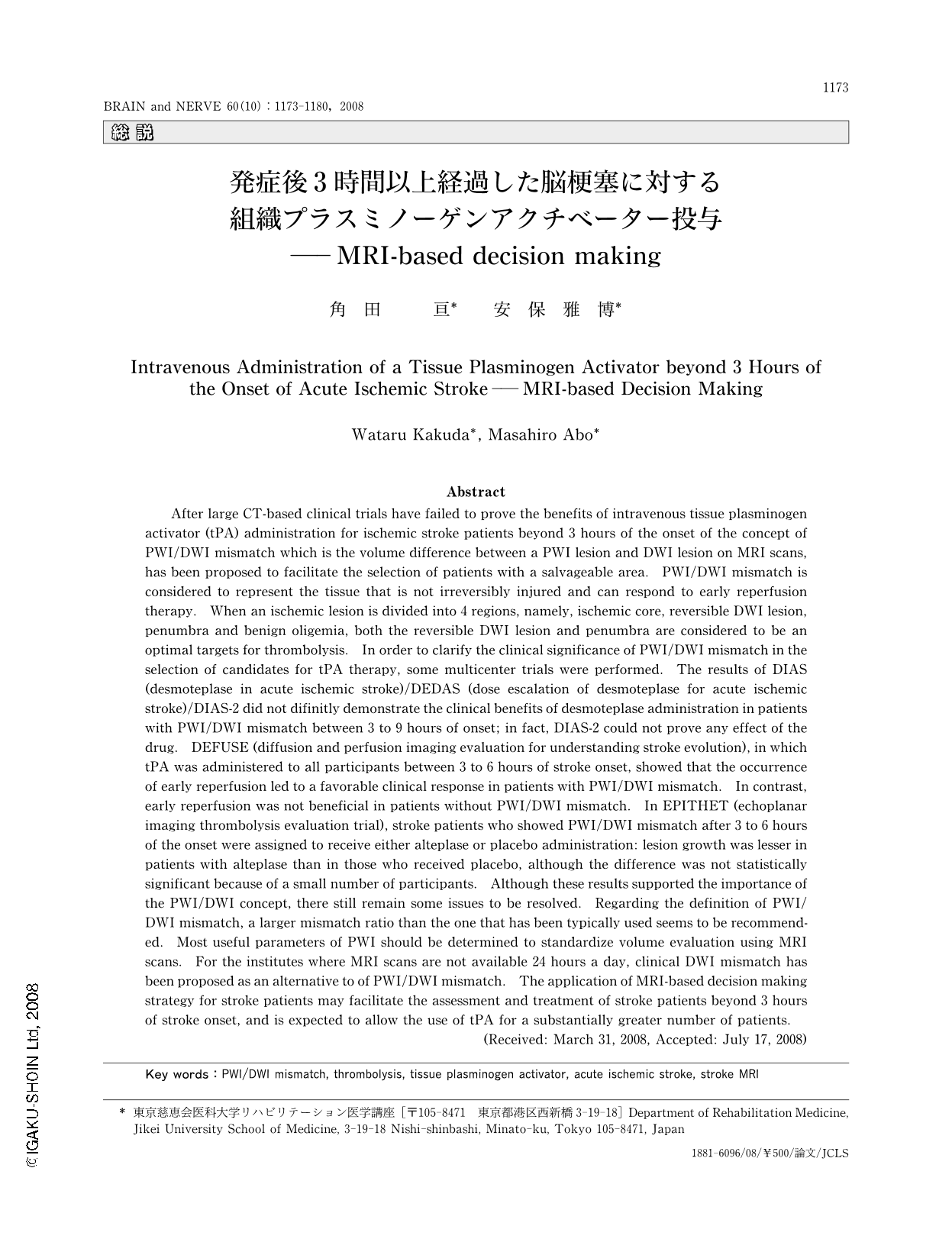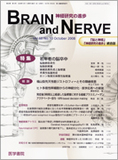Japanese
English
- 有料閲覧
- Abstract 文献概要
- 1ページ目 Look Inside
- 参考文献 Reference
はじめに
組織プラスミノーゲンアクチベーター(tPA)投与は,脳梗塞に対する急性期治療の主役であるが,本治療の適応となる患者群は,現在ではtime windowの短さなどから少数に限られている。これに対し近年,特に発症後3時間以上が経過した脳梗塞患者の中からtPAの効果が期待できる患者群を選択,tPA投与の適応を広げていこうとする試みがなされている。本稿では,主にMRIを用いたtPA投与適応患者選択のコンセプトと,その臨床応用の現況について述べ,tPA投与に関する今後の課題と方向性についても触れる。
Abstract
After large CT-based clinical trials have failed to prove the benefits of intravenous tissue plasminogen activator (tPA) administration for ischemic stroke patients beyond 3 hours of the onset of the concept of PWI/DWI mismatch which is the volume difference between a PWI lesion and DWI lesion on MRI scans,has been proposed to facilitate the selection of patients with a salvageable area. PWI/DWI mismatch is considered to represent the tissue that is not irreversibly injured and can respond to early reperfusion therapy. When an ischemic lesion is divided into 4 regions,namely,ischemic core,reversible DWI lesion,penumbra and benign oligemia,both the reversible DWI lesion and penumbra are considered to be an optimal targets for thrombolysis. In order to clarify the clinical significance of PWI/DWI mismatch in the selection of candidates for tPA therapy,some multicenter trials were performed. The results of DIAS (desmoteplase in acute ischemic stroke)/DEDAS (dose escalation of desmoteplase for acute ischemic stroke)/DIAS-2 did not difinitly demonstrate the clinical benefits of desmoteplase administration in patients with PWI/DWI mismatch between 3 to 9 hours of onset; in fact,DIAS-2 could not prove any effect of the drug. DEFUSE (diffusion and perfusion imaging evaluation for understanding stroke evolution),in which tPA was administered to all participants between 3 to 6 hours of stroke onset,showed that the occurrence of early reperfusion led to a favorable clinical response in patients with PWI/DWI mismatch. In contrast,early reperfusion was not beneficial in patients without PWI/DWI mismatch. In EPITHET (echoplanar imaging thrombolysis evaluation trial),stroke patients who showed PWI/DWI mismatch after 3 to 6 hours of the onset were assigned to receive either alteplase or placebo administration: lesion growth was lesser in patients with alteplase than in those who received placebo,although the difference was not statistically significant because of a small number of participants. Although these results supported the importance of the PWI/DWI concept,there still remain some issues to be resolved. Regarding the definition of PWI/DWI mismatch,a larger mismatch ratio than the one that has been typically used seems to be recommended. Most useful parameters of PWI should be determined to standardize volume evaluation using MRI scans. For the institutes where MRI scans are not available 24 hours a day,clinical DWI mismatch has been proposed as an alternative to of PWI/DWI mismatch. The application of MRI-based decision making strategy for stroke patients may facilitate the assessment and treatment of stroke patients beyond 3 hours of stroke onset,and is expected to allow the use of tPA for a substantially greater number of patients.
(Received: March 31,2008,Accepted: July 17,2008)

Copyright © 2008, Igaku-Shoin Ltd. All rights reserved.


